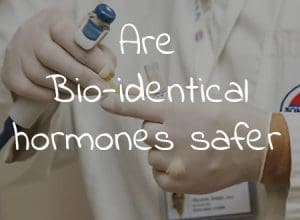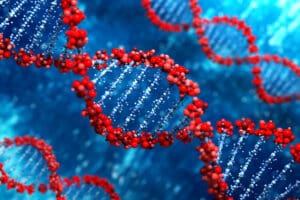

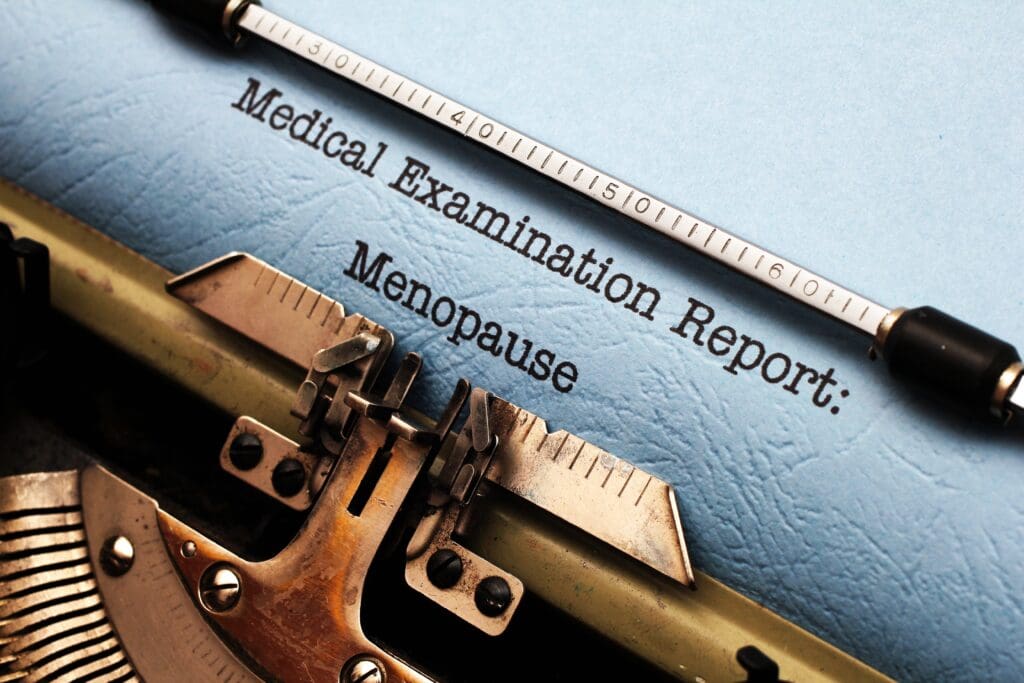

It is becoming increasingly accepted that we age prematurely because our hormone levels decline, and that if we restore hormone levels to the optimal range we avoid many of the aging diseases. Hormone deficiency has been linked to diseases like cancer, heart disease, diabetes mellitus, dementia, osteoporosis and osteoarthritis. Other consequences include visual and hearing loss, fractures, frailty, incontinence, obesity, reduced libido and degenerative neurological diseases.
Additionally hormone deficiency can cause cancer, such as the low testosterone levels associated with prostate cancer, or the low levels of progesterone involved in breast cancer. In the wake of the controversial Women’s Health Initiative studies, it is crucial to differentiate between toxic and safe hormone replenishment. Bio-identical hormone replenishment is a powerful protective agent against serious diseases. Understanding the difference between bio-identical and non-bio-identical hormones can greatly enhance the quality of life for patients.
Synthetic and pharmaceutical hormones are artificial chemicals that attempt to replicate human hormones. They are structurally foreign to the body. While bio-identical hormones have the identical molecular structure to human hormones, enabling easy metabolism, synthetic hormones are altered to have a different chemical make-up than natural hormones. It is this structural difference that has caused so many side effects over the years in HRT.
The immune system is well-documented to attack anything it perceives as foreign or toxic to the body. From an evolutionary aspect, it takes millennia to become accustomed to a new chemical entity. New foreign chemical entities are fraught with dangers, even in our food. An example is the relatively recent hydrogenation of liquid plant oils into foreign saturated fats and the formation of trans-fats, in food production. These foreign fats have only been around for the last 50 years and they result in increases in heart disease and cancer. Conversely, unsaturated plant oils reduce the risk of heart disease and cancer (eg olive oil, flaxseed oil & canola oil – all rich in omega 3 fats).
Similarly, synthetic non-bio-identical hormones have only been around for less than 50 years, compared to bio-identical ones, which have existed in our bodies since the birth of the human race. These synthetic hormones are associated with increased side effects and can very often be detrimental to your health. If they are used at inappropriate doses, and for too long a time period, or in aging people who have diseased blood vessels, there may be an associated increased risk for very serious medical complications. These complications include breast cancer or thrombotic disorders like deep vein thrombosis, stroke or heart attack. This is made worse if the hormones are administered orally, since the oral route greatly increases the production of blood clotting factors, via the first pass liver effect. This first pass metabolism does not occur with the transdermal route, and so blood clotting risk and thrombosis is reduced this way.
Pharmaceutical hormones like diethylstilbestrol, methyl testosterone, conjugated oestrogens, medroxyprogesterones,and birth control pills have all been linked to cancer.


In the 1960s Dr Charles Huggins received a Nobel Prize for his work with bio-identical hormones, decreasing the size of cancer tumours. But this work has been overlooked for decades. Today, after the Women’s Health Initiative concluded there are great risks in prescribing synthetic HRT, bio-identical hormones are clearly the safest option.
Bio-identical hormones are entirely the same as human hormones. The chemical structure is the same as that produced naturally in the human body. Bio-identical hormone replenishment is used to restore hormone levels to normal physiological levels, based on blood tests, not at supra-physiological mega doses, based on symptoms alone, as is often the case with non-bioidentical, synthetic hormones. As mentioned previously, these hormones are mostly administered transdermally to avoid first pass metabolism in the liver. Bio-identical hormones are an integral part of maintaining health and a tremendous anti-aging tool.
Bio-identical hormones have been used in Europe and America for over 15 years and are a lot safer, have fewer side effects, and are generally not linked to cancer at all.
Compounded medicines are unique, individualised pharmaceutical products formulated & adjusted to a patient’s specific needs, symptoms or blood results. They allow for flexible dosages, concentrations, combinations and numbers of actives to be incorporated into one product.
Pharmacy compounding has been an essential part of healthcare since the earliest days of pharmacy. It is always prescribed by a physician or doctor in order to meet the needs of patients. As a valued part of today’s healthcare, compounding currently supplies intravenous mixtures, parenteral nutrition solutions, paediatric preparations, and pain-management medications for patients whose medical needs would otherwise go unmet. The following factors continue to influence doctors and their prescribing habits:


Androstenedione is one of the androgens / male hormones (the others being testosterone and dhea). It is synthesised from cholesterol like all steroid hormones. Usually, when faced with male sex hormone deficiencies we concentrate on replenishing testosterone, DHEA and pregnenolone.
Calcitonin is a hormone involved in calcium metabolism and helps maintain bone. It is an often overlooked hormone made in your thyroid. Calcitonin loss can result in loss of bone mineral density, which can alter food choices. Frail bones, frail brain, frail body, frail life are the associations of deteriorating musculoskeletal aging. Muscular skeletal aging is accelerated by growth hormone deficiency, loss of control of the parathyroid hormone, resulting in increased parathyroid hormone, decreased calcitonin and bone density loss. Calcitonin 200 IU /d together with other hormones are used by physicians like Dr Eric Braverman in the USA, to reverse dementia and enhance cognition.
DHEA is a hormone made by the adrenal glands and is the precursor of the other sex hormones. A small amount is made by the brain and skin. DHEA production declines with age, starting in the late 20s. By age 70 only about ¼ of your previous levels of DHEA are produced.
Functions of DHEA:
Remember that hormones influence each other and a balanced symphony of hormones is essential. For example, insulin resistance or raised insulin influences the synthesis of testosterone and the metabolism of DHEA. Testosterone synthesis increases and DHEA is depleted because elevated insulin increases the activity of an enzyme 17,20–lyase which converts more DHEA to cortisol and testosterone.
Eryhropoeitin is produed in your kidneys and stimulates your bone marrow to make red blood cells. This is why anaemia often results when your kidneys are not functioning properly. Eryhtropoietin supplementation at 50-100u/kg 3 times/week can for example increase oxygenation, reduce anaemia of renal failure, and increase red cell output of the bone marrow.
A report from the Journal of the American Medical Association suggests that EPO (erythropoeitin) may have a beneficial impact on congestive heart failure. It helps prevent inflammation, and studies show that it can prevent cell injury and maintain cell integrity. EPO may improve blood flow to ischemic cells starved by arterial blockages.


The body makes three main oestrogens:
Estradiol is 12 times stronger than estrone and 80 times stronger than estriol. Too high levels of estradiol are associated with breast and uterine cancer. There are over 400 functions of oestrogen in your body. These are the main functions of estradiol:
We usually use estradiol in lower concentrations than estriol in a cream like Bi-est cream. The reason we use oestrogen cream more readily than oral oestrogen is due to the following that may occur with oral oestrogen (not with transdermal delivery):
If you are going to use oral oestrogen it is suggested to use the lowest possible dose. For the reasons listed above, long term replenishment of oestrogen deficiency is safer using the transdermal route. The risk/benefit ratio of replenishing oestrogen this way is superior to oral delivery. The trend in America is to no longer use Tri-est containing estrone which is known to elevate cancer risk, but rather to use Bi-est in varying concentrations. But Tri-est is still used by some and I consider it safer than conjugated oestrogen, progestins and synthetic estrogens.
The following should be noted about the use of bio-identical creams:
- In blood tests there are limitations since these hormones are fat soluble and “prefer” to be in the tissues than the blood. However ratios of the hormones for example oestrogen:progesterone or oestrogen:testosterone can be assessed in the bloods
- Urine metabolite testing, readily available at laboratories like age diagnostic labs (not available in SA yet, but hopefully soon will be). It is possible to send off specimens to Australia, UK, USA for analysis
- saliva testing is becoming more popular abroad due to the true tissue level reflection
- indole-3-carbinol or DIM. Daily dose recommended is 200 to 300mg
- moderate exercise
- cruciferous vegetables
- flax, soy, kudzu, high protein diet, omega 3, b6, b12 and folate
Considerable evidence suggests estriol has a cancer-protective effect. Estriol is a safer form of oestrogen in regard to breast cancer, for these reasons:
Reference: Lemmon HM; Pathophysiologic consideration in the treatment of menopausal patients with oestrogens; the role of estriol in the prevention of mammary carcinoma; Acta Endocrinol (copenh) 1980; 223:S17-S27)
Functions include:
This is the oestrogen made most in the postmenopausal years. High levels stimulate breast and uterine tissue and many researchers believe it may be related to an increased risk of breast cancer. Estrone is made in your fat cells mostly in the postmenopausal years. Pre-menopausally it can be converted to estradiol in your ovaries, but postmenopausally, little estrone becomes estradiol since the ovaries have stopped working. Therefore the fatter one is the more estrone one makes. Also, alcohol consumption decreases ovarian hormone production and shifts your oestrogen production to estrone, which increases the cancer risk.
Estriol is the protective oestrogen (also high during pregnancy). It does not activate the oestrogen receptor, but occupies the receptor site so that it is not available for estradiol. Balancing of hormones is essential and testing prior to supplementation is essential. Careful monitoring is obviously essential.
High risk includes previous breast cancer, 2 family members having breast cancer, young menarche (younger than 11), early menopause (younger than 45), obesity, alcohol abuse, etc. High risk patients should consider the following:
Traditionally we replace growth hormone last, ie we first ensure all other hormone levels are normal before considering growth hormone supplementation.
There are many advantages attributed to growth hormone in adult gowth hormone-deficient individuals. In fact, entire books are written on this hormone alone. We replace growth hormone by a daily subcutaneous injection. There are also secretagogues available that are a combination of amino acids, which enhance your own pituitary production of growth hormone.
Cortisol is the only hormone in your body that increases with age. The premature aging that occurs with increased cortisol (a stress hormone produced by your adrenal glands, but essential for life) is well described in the literature.
Careful avoidance of these two conditions may prevent most, if not all, aging effects attributable to cortisol.
Aldosterone is a mineralocorticoid synthesized in your adrenal glands. It is essential to regulate potassium absorption in the tubules of your kidneys. Aldosterone and renin are sometimes elevated in people with elevated blood pressure. In Addisons disease, which is a non-functioning adrenal gland state, replacement of the glucocorticoids (cortisol) and the mineralcorticoids (aldosterone) are essential to maintain life. The typical picture of aldosterone deficiency or Addisons would include very low blood pressure, high potassium, low sodium, high urea, coma and even death.
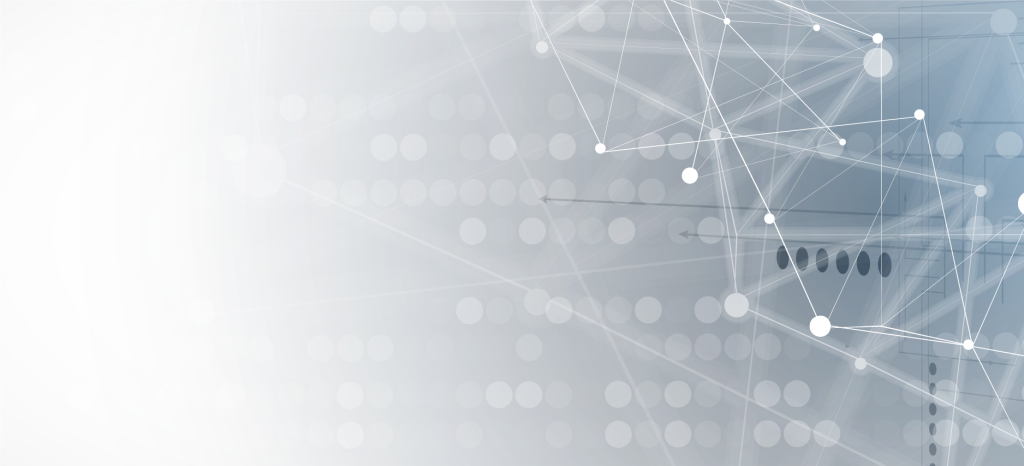

Growth hormone increases IgF1 (an insulin like growth factor in your liver). IgF1 is also a bio-identical hormone that can be administered in the same way and may be even more effective than growth hormone. Both hormones have amazing effects on weight loss, with an improvement in metabolism, appetite reduction, an increase in muscle mass, and better blood sugar regulation.
Incretin is a bio-identical form of glucagon stimulation for the pancreas and blood sugar reversal. (Our pancreas makes a vital hormone insulin which controls blood sugar, but two other important hormones are produced there: glucagons and somatostatin) which aid in digestion and support our metabolism.
Insulin is the main hormone that regulates your blood sugar (other important hormones being oestrogen, progesterone, DHEA, thyroid, etc). If you become unresponsive to insulin (insulin resistant), your blood sugar will rise and you will develop type 2 diabetes.
From an anti-aging point of view we like to have optimal youthful levels of most hormones (in other words higher levels than postmenopausal or other pausal values) The exceptions to this rule are: cortisol, insulin and adrenalin. If these hormone levels are high, aging is accelerated, so ideally we try to keep our fasting insulin levels below 5 and our stress hormones (cortisol and adrenaline) down.
Melatonin is a hormone made in the pineal gland of the brain. This hormone sets your 24hr body cycle. Melatonin is made from the amino acid tryptophan, which is also used to make serotonin. Therefore when melatonin goes up, serotonin goes down. If you eat too many high glycaemic carbohydrates you will make less melatonin and more serotonin.


Bio-identical parathyroid hormone supplementation is becoming increasingly popular to treat osteoporosis. It is proven to increase spinal, hip, and total bone density over the long term, because it mimics the body’s naturally produced parathyroid hormone. In combination with other hormones like DHEA or growth hormone (if deficient) these hormones provide better bone density reversals than any of the drug therapies. Parathyroid actually activates growth hormone inside the bone and they work really well together.
Pregnenolone is a steroid hormone made in your adrenal glands and is the precursor to DHEA, cortisol and the sex hormones. Your body synthesises this hormone from cholesterol and it is often referred to as the “mother of all steroid hormones”. From ages 35 to 75, most people have a 65% decline in pregnenolone.
Pregnenolone is used in the treatment of arthritis, depression, memory loss, fatigue and moodiness.
Progesterone is one of the sex hormones made in the ovaries before menopause. After menopause some progesterone is made in your adrenal glands. Progestin (synthetic progesterone) is not progesterone. Only progesterone is bio-identical.
Increased appetite, weight gain, fluid retention, depression, irritability, headaches, decreased energy, bloating, breast tenderness, decreased sexual interest, acne, hair loss, insomnia, breakthrough bleeding, spotting, stops the protective effects estrogen has on your heart, increases LDL (bad cholesterol), decreases hdl (good cholesterol, protects only the uterus from cancer). Also, progestins do not prevent vasospasm (an effect opposite to progesterone).
Progesterone is a truly wonderful hormone in its natural form. It makes no sense to change its structure to a progestin and expect the same good effects. The side effects of progestins are actually progesterone deficiency. This is because progestins bind to progesterone receptors and inhibit progesterone from binding to its receptor sites. Methods of delivery: oral micronised progesterone and transdermal cream (eg 3, 5 or 10% cream).
Androgens are often called “male hormones”. They are testosterone, DHEA and androstenedione. Testosterone is made in the adrenal glands and ovaries. It is important to measure both free and bound testosterone since only about 1% is free, the rest is bound to SHBG (sex hormone binding globulin) which carries the testosterone in your blood.
Testosterone has a myriad of functions in the human body:
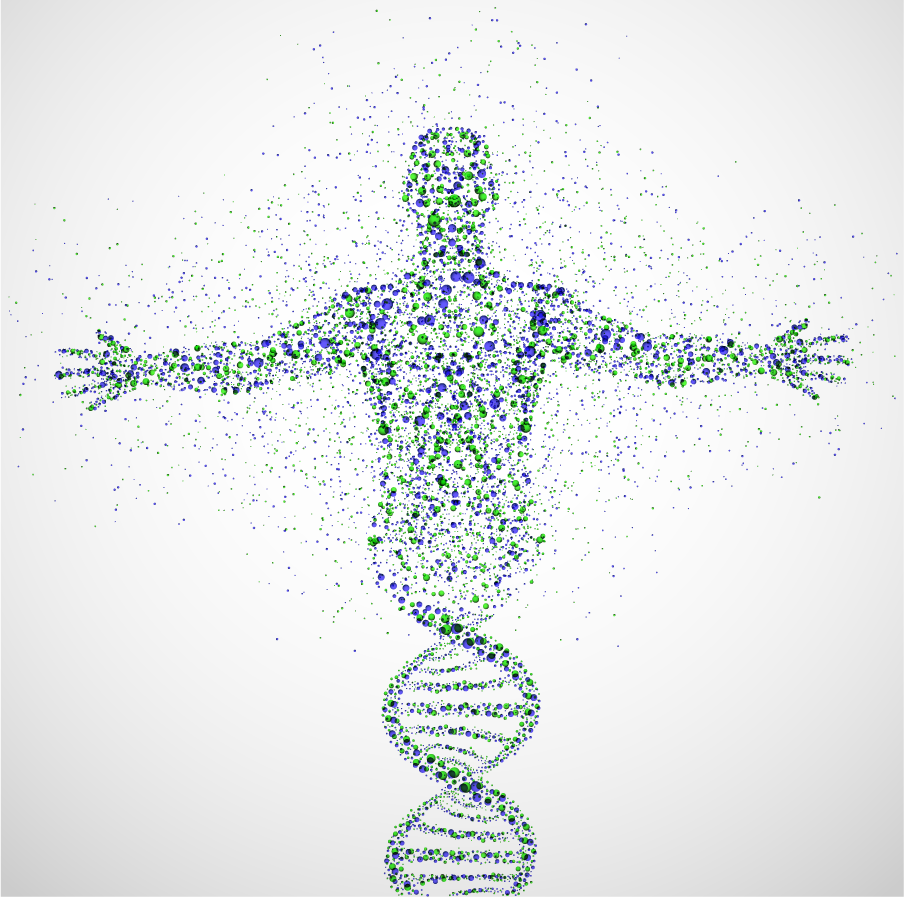

Natural testosterone is the preferred method. Methyltestosterone (synthetic) has been suggested to be carcinogenic to the liver. Natural testosterone is effective as a pill or a cream. Rotation of site of application is important to prevent hair growth. Also remember the skin has an enzyme, aromatase, which can change the testosterone applied to estradiol. Natural aromatase inhibitors include zinc, progesterone and chrysin. There are natural treatments like nettle root that also increase the free testosterone from SHBG mentioned earlier. Injectable testosterone is also available (mostly used in andropause).
The thyroid hormones (eltroxin/T4 and tertroxin/T3) control the rate that your body burns fuel. These two hormones are necessary in infants for the normal development of the central nervous system, in children for skeletal growth, and in adults for normal function of other organs and systems. Thyroid hormones also affect tissue growth and maturation, help regulate fat digestion, and increase intestinal absorption of carbohydrates. Typically thyropause (lowering of thyroid functioning) occurs between the ages of 30 and 40, but even more frequently at age 50.
The importance of T3 and T4 and TSH (thyroid stimulating hormone from the pituitary) needs to be looked at differently to the way most doctors are taught. A partial deficiency in thyroid hormones allows life, but is a life often miserable with complaints and physical signs typical for the disease. One of the most important consequences of thyroid hormone deficiency is a decrease in the production of most other important hormones such as growth hormone, testosterone, female sex hormones, cortisol, DHEA, etc. This polyhormonal induced senescence is reversed with thyroid hormone treatment.
The best thyroid deficiency treatment should include both T4 and its more active metabolite T3.


According to the Journal of Public Health, increasing vitamin D intake may help lower the risk of breast cancer, colon cancer, skin cancer, prostate and ovarian cancer by as much as 50%. Vitamin D has now been shown to decrease insulin resistance, regulate cell production, and modulate immune function. It also prevents and reverses skin damage. As your skin ages, it can no longer synthesise vitamin D from the sun. If you notice your skin is not healing the way it used to, extra vitamin D might be the answer.


In conclusion, optimising the wonderful symphony of bio-identical hormones is key to optimal health – along with good nutrition, good lifestyle choices and moderate exercise. Mother nature gave us these hormones and for many centuries they have withstood many challenges and the human race has survived. We cannot change the structure of nature’s hormones and expect the same effects. In fact, we often see very harmful effects. Countless studies show worse outcomes when the structure of a hormone is changed. Bio-identical replenishment is all about the use of the structurally same hormones found in our own bodies. Ones our immune systems do not perceive as foreign.
